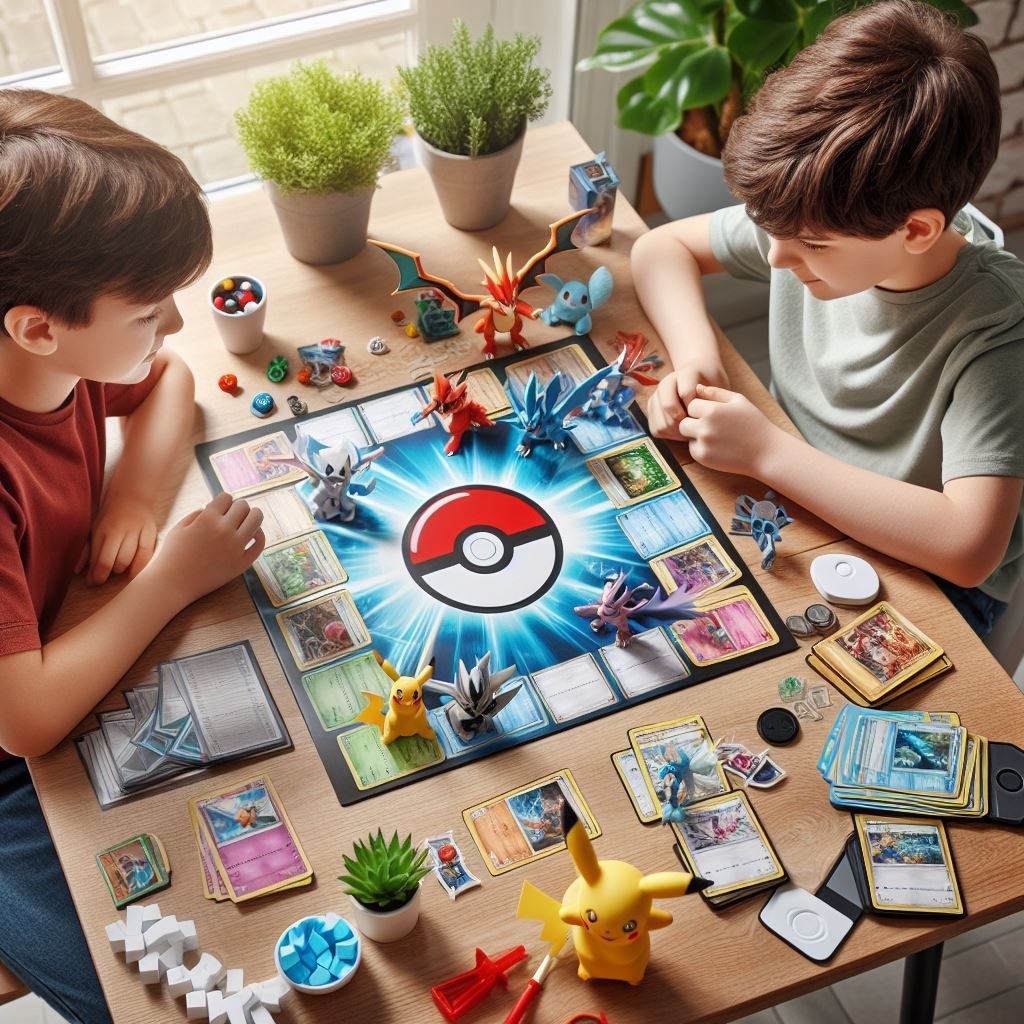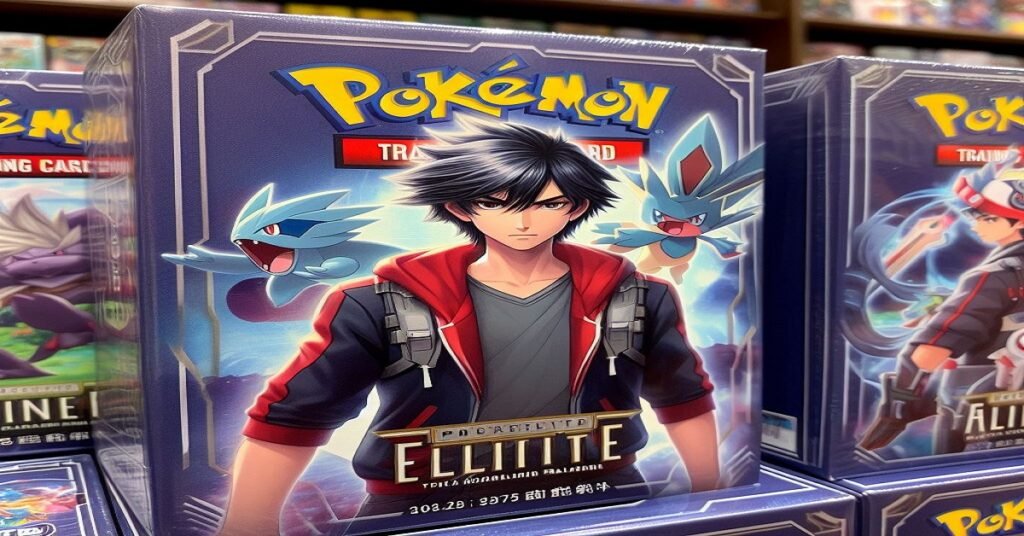A beginner’s guide to the Pokemon Trading Card Game Pocket format – explaining the simplified mechanics, card pool, deck building tips, top products, gameplay strategies, and reasons why new & nostalgic Pokemon TCG fans enjoy this accessible 60 card battle format.
Complete Guide to the Pokémon Trading Card Game Pocket
The Pokémon Trading Card Game Pocket format offers a fun and accessible way for both new and experienced Pokémon TCG players to battle head-to-head using small decks of only 10 Prize cards. With decreased complexity compared to the standard trading card game, Pocket emphasizes straightforward gameplay using classic Pokémon from the original Base Set and Jungle releases.
What is the Pokémon Trading Card Game Pocket?
The Pokémon Trading Card Game Pocket (often shortened to Pokémon TCG Pocket or just Pocket) is a beginner-friendly Pokémon TCG format that uses smaller decks and simplified rules to provide quick pick-up games ideal for new players.
Released in 2022, Pocket features beloved Pokémon from the first two Pokémon TCG expansions – Base Set and Jungle) – including Charizard, Blastoise, Pikachu and more classic Gen 1 species. By limiting the card pool, the format also makes collecting easier for casual fans.

Here are some key facts about the Pokémon TCG Pocket:
- Uses smaller 60 card decks instead of standard 60 cards
- Features 10 Prize cards per player instead of 6
- Cards have reduced HP and simpler attack costs
- Limits GX) and V) cards
- Focuses on nostalgic Base Set and Jungle Pokémon
By streamlining many gameplay concepts, the Pocket format allows for quicker games and lowered barrier to entry while still maintaining the core spirit of the Pokémon TCG. It’s an ideal casual play battle format, for playing games on-the-go, or just for a trip down memory lane with classic Gen 1 Pokémon cards.
The Cards and Card Types in the Pokémon Trading Card Game Pocket
The Pokémon Trading Card Game Pocket format features the same three main card types as the standard trading card game:
- Pokémon cards – The main characters of the game. Pokémon cards have HP, attacks, weaknesses etc.
- Trainer cards – Support cards that activate effects. Draw cards, search decks, heal damage etc.
- Energy cards – Attached to Pokémon to pay attack costs.
Understanding these core card types and how to use them is key to building a successful Pocket deck.
Pokémon Cards
As always, Pokémon cards are the centerpieces of your Pocket deck and serve as your main attackers. Popular Base Set and Jungle Pokémon featured in Pocket include:
- Charizard) – The iconic fire dragon is a powerful attacking threat.
- Blastoise) – With high HP, Blastoise is a tanky Water type.
- Venusaur) – Get early damage with Venusaur’s Power Siphon attack.
- Pikachu) – Use Pikachu’s Agility to power up Quick Attacks.
When deck building, ensure you have a mix of Basic and Stage 1 evolutions. Stage 2 Pokémon like Meganium) are not included in the Pocket card pool.

Trainer Cards
In Pokémon Trading Card Game Pocket trainer cards provide pivotal support and can swing games in your favor if used at the right time. Strong Pocket Trainer cards include:
- Bill) – Draw 2 cards for refreshed hand options.
- Pokémon Breeder) – Search your deck for Basic Pokémon.
- Potion Energy) – Heal 30 damage from your Active Pokémon.
- Defender) – Your defending Pokémon takes 20 less damage.
Use Supporter cards like Bill and Breeder for draw power and consistency. Tech cards like Potion Energy and Defender provide protection.
Energy Cards
As with all TCG formats, Energy cards in Pocket provide the necessary resource for putting attacks into play.
Key Pocket Energy cards:
- Grass Energy) – For powering Grass-type Pokémon attacks.
- Water Energy) – Attach to Water Pokémon like Blastoise.
- Double Colorless Energy) – Provides two Energy of any type.
How to Play the Pokémon Trading Card Game Pocket
Gameplay in the Pokémon Trading Card Game Pocket follows simplified mechanics compared to the standard trading card game while preserving the classic back-and-forth battle flow. Here is an overview:
- Each player starts with a 60 card deck and shuffles. Draw 7 cards as your starting hand.
- Take a Basic Pokémon as your Active Pokémon. Place up to 5 on your Bench.
- Attach 1 Energy per turn to power up attacks. Only Basic Energy allowed.
- Attack each turn by meeting the reduced attack costs. Deal damage to opponent’s Active Pokémon.
- When a Pokémon is Knocked Out, award a Prize card to the opponent.
- Win by taking your opponent’s 10 Prize cards first.
With decreased HP totals and attack costs, games move quicker. However, the core goal remains unchanged – knockout your opponent’s Pokémon until they have no Prize cards left in play.
Setting Up Your Pokémon TCG Pocket Battle
To begin a game, both players shuffle their decks thoroughly and draw 7 cards for their starting hand.
Next, follow these steps:
- Take a Basic Pokémon from your hand and play it face down as your Active Pokémon.
- Play up to 5 more Basic Pokémon face down onto your Bench.
- Reveal your Active and Benched Pokémon and add any remaining cards in hand.
- Attach 1 Energy card from hand to Active Pokémon. Only Basic Energy allowed.
- Complete any other set up abilities or effects. Then, start battling!
Correct set up ensures you have Pokémon ready to power up and attack quickly. Avoid starting with low HP basics that could get easily knocked out.
Gameplay and Turn Structure
Each turn in the Pokémon TCG Pocket follows this straightforward structure:
- Draw a card from your deck.
- Attach 1 Energy from hand to one of your Pokémon.
- Play any Trainer cards you wish to use.
- Attack by meeting Energy attack costs. Deal damage.
- Check for any Knock Outs. Award Prizes.
- Discard Energy from Knocked Out Pokémon.
- End turn.
Repeat these phases back and forth until one player wins!
When attacking, your Pokémon deals its damage to the Defending Pokémon (your opponent’s Active Pokémon). If damage meets or exceeds a Pokémon’s HP, it gets Knocked Out and your opponent awards you a Prize card. Knocking out Prizes is the main win condition!
Winning the Game
Because Pocket only utilizes 10 Prize cards per player, games can end very quickly. As soon as your opponent cannot draw a Prize card because none remain in their Prize zone, you win the game!
The last player with Prize cards left wins. To achieve victory, these key pointers may help:
- Quickly power up attackers to take early Knock Outs
- Use Trainer cards effectively for draw and search consistency
- Take multiple Knock Outs in one turn by stacking damage
- Play defensively if you take an early Prize lead
With some practice, you’ll be winning Pocket battles in no time!
Why Play the Pokémon TCG Pocket Format?
While standard Pokémon Trading Card Game Pocket gameplay has a great competitive scene, it can also be complex for new players with extensive card pools. Here are key reasons to play Pocket:
- Lower barrier to entry – Easy to learn gameplay mechanics
- Quicker and portable – Faster games, take your deck anywhere
- Affordable to collect – Smaller card pool from early Base/Jungle sets
- Ideal for new players and children – Simplified concepts
- Nostalgic throwback appeal – Beloved old school Gen 1 Pokémon card art
Whether you’re a new player getting into Pokémon Trading Card Game Pocket, a seasoned veteran, or just a Gen 1 fan, the Pocket format offers an enjoyable pick-up battle experience.
To get the Pokemon TCG Click here
Getting Started with Pokémon TCG Pocket
The best way to jump into Pocket is to grab a high value product with ready-to-play decks:
- Pocket Elite Trainer Box – 10 Pocket booster packs, card sleeves, gameplay items. MSRP of $39.99.
- Pocket Deck Build Box – 3 half-size 60 card decks focused on Charizard, Blastoise and Venusaur archetypes. Plus booster packs. $19.99 MSRP.
You can also collect cards through:
- Pocket boosters – Each standard $3.99 pack contains 10 cards plus 1 “Historical Card” reprint.
- League Battle Decks – Future semi-competitive decks expected.
- Single card purchases – Buy chase cards individually.
When building your first deck, focus on 3-4 main attacker Pokémon lines and around 15-18 Trainer cards for consistency. Craft a solid draw engine for a smooth playing experience.
Here is a table summarizing the key specs and features of the Pokémon Trading Card Game Pocketformat:
| Feature | Description |
|---|---|
| Deck Size | 60 cards |
| Prize Cards | 10 per player |
| Card Pool | Base Set, Jungle, future expansions |
| Card Types | Pokémon, Trainers, Basic Energy |
| Pokémon Cards | Lower HP, reduced attacks costs |
| GX/V Cards | Not allowed |
| Game Length | 5-10 minutes |
| Gameplay | Simplified mechanics, ideal for beginners |
| Release | August 2022 |
| Ideal For | New/young players, pickup games, nostalgia |
| Key Products | Pocket Elite Trainer Box, Deck Build Box |
Advanced Tips and Strategies
Once you have a good grasp of the core Pocket gameplay mechanics, applying advanced tactics and strategies can help step up your game:
Use Trainer Cards More Efficiently
- Play Supporters early for draw power then shift to tech Trainers later.
- Save Guzma and Switch at the right moments to force opponent’s weak Benched Pokémon Active.
- Stack multiple Trainer effects in one turn for explosive plays.
Structure Ideal Prize Card Setups
- Don’t put all your powerhouses as Prizes or you’ll struggle attacking if Prized.
- Ensure you have a secondary attacker line as Prizes in case your main Pokémon get Prized.
Craft More Consistent Draw Engines
- Include multiple copies of draw Supporters like Professor Oak and Bill.
- Add Collector for superior search power to find needed Pokémon every game.
Build Cohesive Deck Archetypes
- Construct decks with synergistic Pokémon (single types work well).
- Counter the current metagame by teching in cards strong against popular decks.
As the Pocket format continues to evolve, players will keep discovering new card combos and powerful decks. This makes for an exciting gameplay environment!
Best Pocket Decks and Archetypes
While any deck is viable in the right hands, these Gen 1 Pokémon archetypes have shown early promise:
- Charizard – Hard hitting Fire deck. Core of Charizard, Arcanine, Ninetales.
- Blastoise – High HP Water tank deck with solid damage output.
- Venusaur – Get early Knock Outs by accelerating Energy.
- Electric – Use Electabuzz and Jolteon to power up and switch Active Pokémon.
- Haymaker – Trainer and Energy denial disruption deck.
Additional competitive decks will emerge as more players brew and innovate!
Conclusion
With its classic Pokémon roster and simplified mechanics, the Pokémon Trading Card Game Pocket format allows both new and experienced players to battle it out in quick, back-to-basics matchups. Early sets like Base and Jungle have stood the test of time for good reason – the iconic card artwork and memorable Pokémon ensure endless replayability even today. Pack your favorite Pocket deck and relive the nostalgia of early Pokémon battle!

1 thought on “Pokémon Trading Card Game Pocket | A Thrilling Adventure”